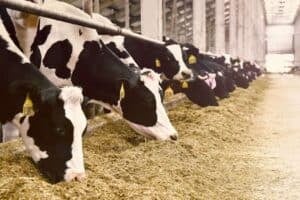In its turbulence and uncertainty, SA 2018 mirrors very well 1988. Been there, done that.

The infamous Cobra ride at Ratanga Junction amusement park, now closed, was nothing in comparison.
The most stomach-churning helter-skelter ride is simply living in South Africa.
One gets so embroiled in the nerve-wracking vicissitudes of our daily politics that one easily forgets that it has always been thus.
This week I spoke at a supper club in KwaZulu-Natal. It was their 30th anniversary, so I allowed myself to wander down the byways of the past, back to 1988.
Ah, those halcyon days. Our currency was still frisky, trading at R2 to a US dollar. A loaf of bread cost less than R1. To fill the car’s 75-litre petrol tank cost a mere R30. Most importantly for a harried journo, a bottle of Famous Grouse was just R10.
But time puts a gloss on memory. It was a dark year, one of the most tumultuous in a country seemingly sliding towards the abyss.
The State of Emergency declared three years earlier had revealed the first cracks in the edifice of white power. The cracks had widened to fissures that could not be papered over.
The country was in turmoil. Liberation movement insurgents were engaged in daily acts of sabotage, bombing and assassination. The apartheid government’s special forces, in turn, that year struck out at its enemies in Lesotho, Botswana, Zimbabwe and Zambia.
At Cuito Canavale, the SADF went head-to-head with not only the Angolans, but for the first time in direct combat with the Cubans. Both sides claimed victory. It’s irrelevant whom you believe. What is incontestable is that the engagement triggered the withdrawal of SA forces, first from Angola and the South West Africa, by the end of that year.
Our hearts may sway our minds when it comes to distinguishing victors from vanquished, heroes from villains, but statistics are less malleable.
In 1988, the population of SA was 29 million and unemployment was a fraction over 17%. Today, the population is 58 million and unemployment has increased by 60% to 27.2%.
One could heap on the pain. Virtually every statistic, comparator and index – from the obvious fields of health, crime, education through to the arcane, such as car accidents and infrastructural maintenance – show a country sliding steadily downwards.
1988 was also the year that Alan Paton, anti-apartheid activist and author, died. I often spoke with Paton, since he was a regular contributor to the commentary pages I edited on the Sunday Tribune. Behind his fierce rallying calls in defence of human rights, there was a different reality. By the time of his death in April of that year, I think he had pretty much despaired of his hopes for liberalism in SA.
It’s sad, then, that he missed the next switch-back in the political roller-coaster. Within two years FW de Klerk had struck the death knell of white domination and within half a dozen a more we had adopted a Constitution that enshrined every single liberal value that he had fought an entire lifetime for.
But the roller-coaster has gone into another steepening dive. Liberal values are being eroded, race relations are at a rancorous low, and the economy is going to hell in a handbasket.
In its turbulence and uncertainty, SA 2018 mirrors very well 1988. Been there, done that.
For more news your way, download The Citizen’s app for iOS and Android.






